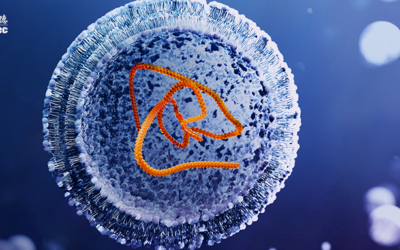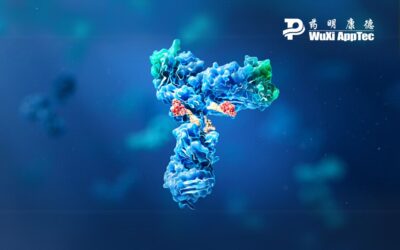Genetic toxicology studies are an integral part of the basic toxicological information package used in the risk assessment and decision-making process for a new drug. In this short guide, we walk through four critical in vitro genotoxicity assays drug developers need to know.
For small molecule drug development, in vitro genetic toxicology studies help researchers assess the potential for inducing gene mutations as well as structural and numerical chromosomal alterations. In vitro assays play an important role in this in two primary ways:
1. Early screening and compound lead optimization
At the earliest stage of drug development, researchers want to limit time and money spent on a bad compound candidate. That’s why they conduct early in vitro screening studies. In vitro testing can help compounds fail early and fail fast, progressing only viable candidates into a translational drug development program. These assays are cheaper, faster, and require a limited amount of the test material compared to in vivo.
2. Supplemental to in vivo assays
A battery approach is required for genotoxicity studies because no single test is capable of detecting all genotoxic mechanisms relevant in tumorigenesis. As such, genotoxicity assays are usually evaluated in mammalian cells both in vitro and in vivo. Eventually, this data will be important for an IND package before a drug can go to Phase I clinical trials.
With this in mind, let’s review four critical in vitro genotoxicity assays you should know.
#1. Bacterial Reverse Mutation Assay (Ames)
The bacterial reverse mutation test (commonly known as the Ames test) identifies substances that induce gene mutations.
Given the importance placed on the outcome of the Ames test by regulatory authorities, many companies screen their compounds using the miniaturized versions of the Ames test (Mini Ames) for microbial genotoxicity at a very early stage of the development. At this point, test compound availability and resources are often limited, so it is not necessary or feasible to run a full standard Ames test. As such, the Mini Ames Assay is often conducted. A positive result is sufficient to categorize the testing compound as mutagen. If the Mini Ames Assay comes back negative, they move on to further development.
The advantage of this approach is that results can be directly extrapolated to what could be seen in the subsequent GLP study. The disadvantage is that there could be difficulty in detecting weak mutagens or missing some mutagens due to fewer strains employed. While the Mini Ames Assay helps rapidly eliminate any obviously bad candidates, the resulting data itself is not enough.
The Full Standard Ames Assay is required for IND submission under GLP compliant conditions. The Mini Ames Assay is tested under non-GLP conditions, widely used for screening. It hasn’t been universally accepted as a replacement for standard regulatory testing.
Compliance with Good Laboratory Practices (GLP) regulations for conducting nonclinical laboratory studies is intended to assure the quality and integrity of the safety data filed pursuant to relevant requirements. Nonclinical testing conducted according to GLP increases confidence in the reliability and trustworthiness of data. After initial screenings, assays must be conducted under GLP conditions.
#2. In Vitro Chromosomal Aberration Assay
The Chromosomal Aberration Assay identifies agents that cause structural chromosomal aberrations (deletions and rearrangements) in cultures of established cell lines, cell strains or primary cell cultures, including human or other mammalian peripheral blood lymphocytes.
Chromosomal aberrations are the cause of many human genetic diseases, and there is substantial evidence that chromosomal damage and related events causing alterations in oncogenes and tumor suppressor genes of somatic cells are involved in cancer induction in humans and experimental animals.
#3. In Vitro Micronucleus Assay
The in vitro micronucleus assay identifies substances that induce clastogenicity (structural chromosomal aberrations through breaks in DNA) or aneugenicity (numerical chromosomal aberrations through interactions with non-DNA cellular targets). The assay can be conducted using cultured cell lines or primary human or other mammalian peripheral blood lymphocytes. Micronuclei are formed when either a chromosome fragment or an intact chromosome is unable to migrate to a mitotic pole during the anaphase stage of cell division and is not incorporated into the daughter nuclei.
The in vitro micronucleus test has been shown to be as sensitive as the chromosomal aberration test for the detection of clastogens and has the additional advantage of detecting aneugenic substances. However, the in vitro micronucleus test does not allow identification of translocations and other complex chromosomal rearrangements that can be visualized in the chromosomal aberration assay, which may provide additional mechanistic information.
#4. In Vitro Mouse Lymphoma Assay (MLA)
The in vitro mammalian cell gene mutation tests using the thymidine kinase gene are forward mutation assays that identify substances that cause gene mutations at the thymidine kinase (TK) reporter locus. There are two distinct assays that use two specific TK heterozygous cell lines:
- L5178Y TK+/- 3.7.2C cells for the mouse lymphoma assay (MLA)
- TK6 (TK+/-) cells for the TK6 assay
The MLA has been widely used for regulatory purposes, and the TK6 has been used much less frequently. The MLA test is conducted in the presence and absence of an exogenous metabolic activation system (S9), as assayed by colony growth in the presence of 5-trifluorothymidine. The validation of the MLA demonstrated its appropriateness for detecting not only gene mutation but also the ability of a test substance to induce structural chromosomal damage.
Validating Study Design & Interpreting Study Results
These in vitro genotoxicity assays are standardized and required by regulatory agencies. However, each in vitro assay itself needs to be validated by the lab prior to use.
Validation is important because it ensures the assay is producing reliable and reproducible results within an acceptable range. This is something your laboratory testing partner should be able to help you with.
Lastly, no single assay can cover everything, which is why in vitro assays are important and why the result of the assays must be interpreted by an expert. Any misinterpretations can lead to costly or dangerous false positives and unfortunate false negatives.
Conclusion
In vitro genotoxicity assays can’t replace in vivo assays, but they can serve as an effective early drug development screening test and support a complete, high-quality IND package.
WuXi AppTec’s Laboratory Testing Division has extensive experience, running a large number of assays every year. We have an entire department dedicated to these in vitro assays, as well as a group of specialists that interpret the data. Our toxicologists can help you create a battery of tests that yield high-quality data, ensuring that you are aware of potential risk during the entire course of drug development – saving you time and reducing your costs.
Learn more about WuXi AppTec’s safety assessment services or contact an expert today.
As a global company with operations across Asia, Europe, and North America, WuXi AppTec provides a broad portfolio of R&D and manufacturing services that enable the global pharmaceutical and life sciences industry to advance discoveries and deliver groundbreaking treatments to patients. Through its unique business models, WuXi AppTec’s integrated, end-to-end services include chemistry drug CRDMO (Contract Research, Development and Manufacturing Organization), biology discovery, preclinical testing and clinical research services, helping customers improve the productivity of advancing healthcare products through cost-effective and efficient solutions. WuXi AppTec received an AA ESG rating from MSCI for the fourth consecutive year in 2024 and its open-access platform is enabling around 6,000 customers from over 30 countries to improve the health of those in need – and to realize the vision that “every drug can be made and every disease can be treated.”


